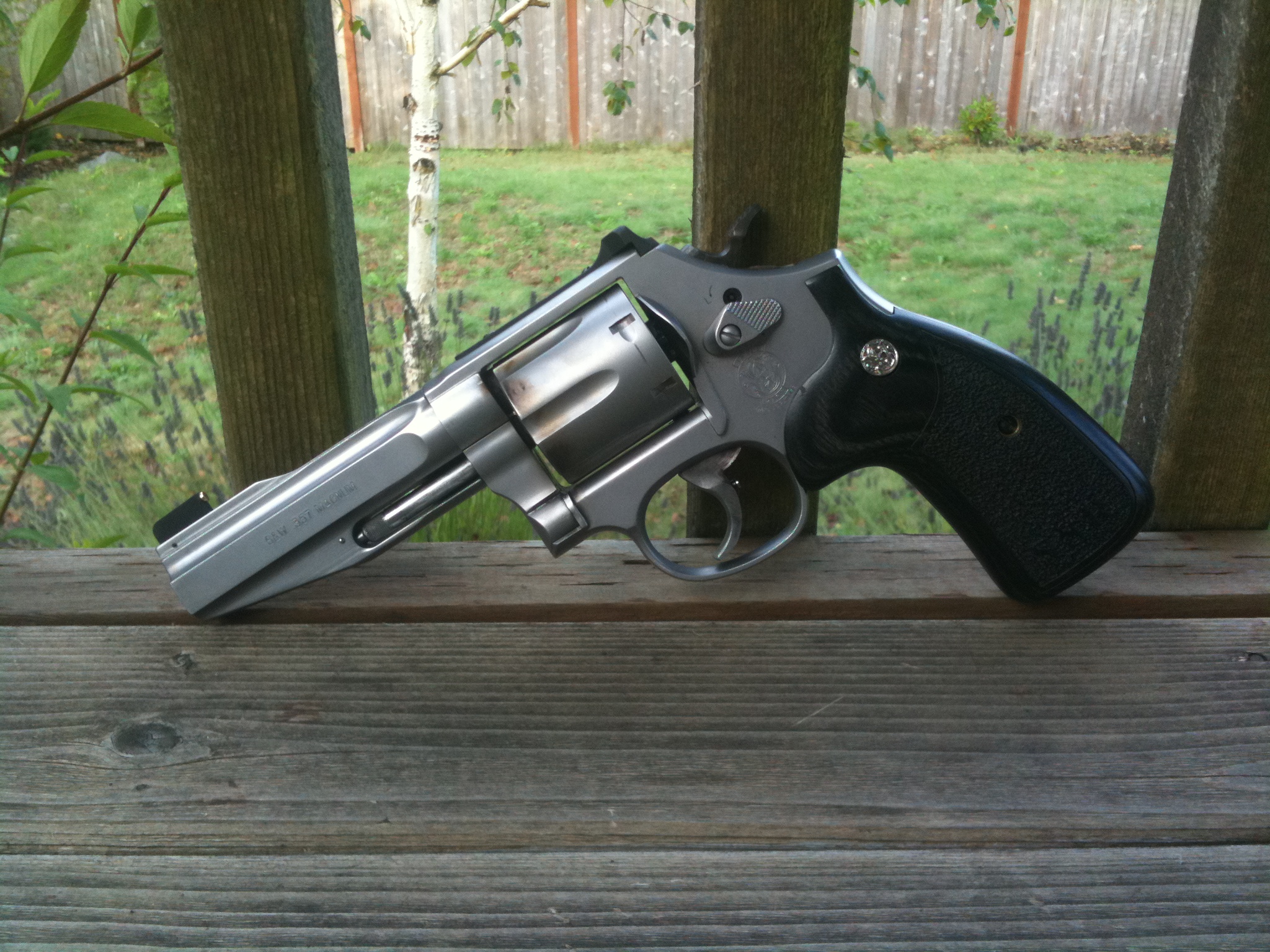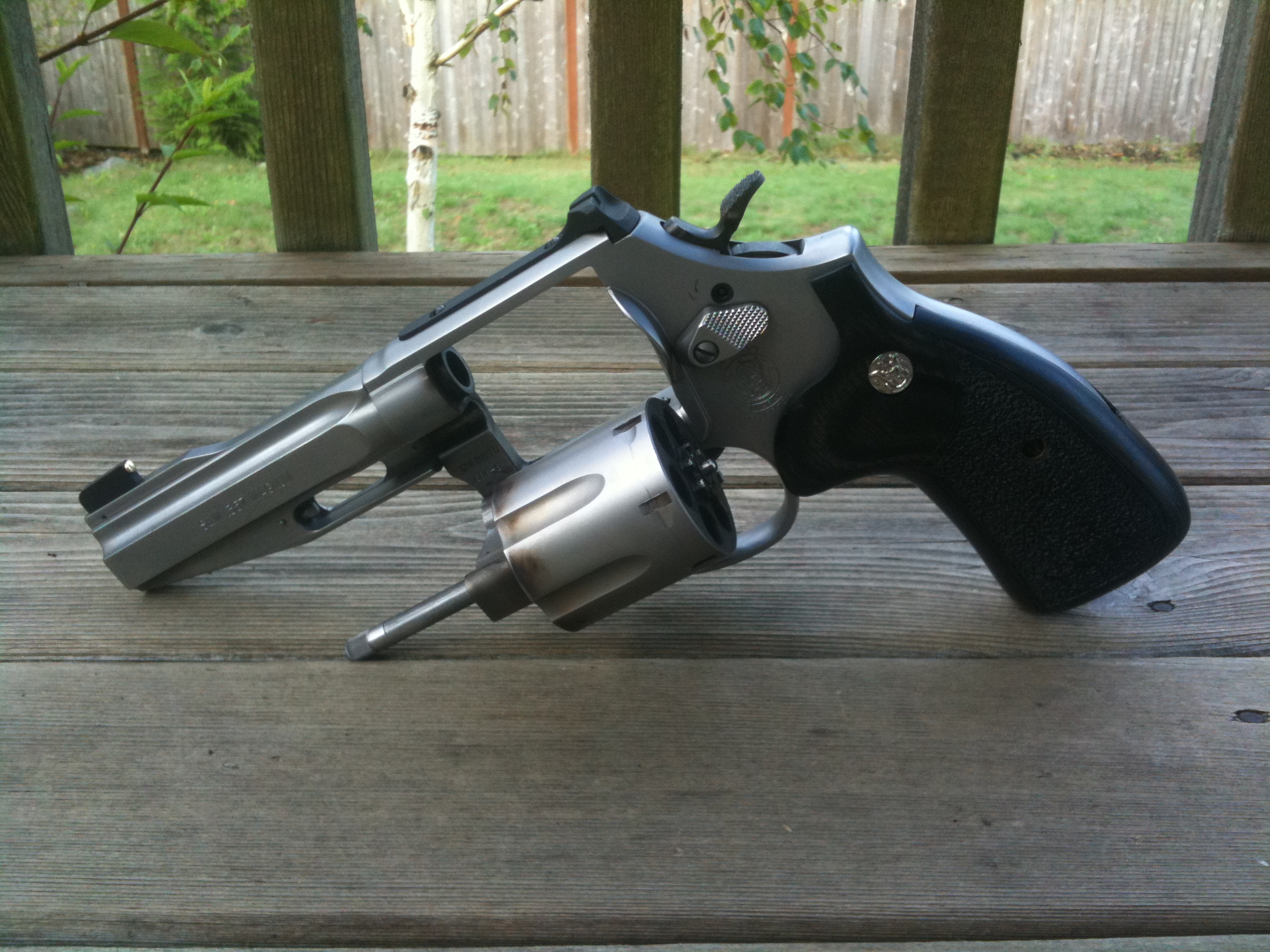The promised post on Major/Minor scoring in the USPSA Revolver division is here! I’ve talked in the past about how I think it would be cool if USPSA allowed revolvers shooting minor to have 7 or 8 rounds, making the 686+ and the 627 viable USPSA Competition options. However, as that doesn’t look very likely for now, I did want to look at the possible advantages to scoring minor in USPSA revolver division.
For those not familiar with the Major/Minor scoring, USPSA targets are divided in to 4 zones, each worth a certain number of points. Guns scoring Major meet a power factor of 165 (bullet weight x velocity/1000) and guns scoring Minor are in between 125 and 165. The four USPSA zones are A, B, C, and D, with the following point breakdowns.
- A Zone: 5 points for Major and Minor
- B & C: 4 points for Major, 3 points for Minor
- D: 2 points for Major, 1 point for Minor
The reason the points are important is because USPSA score is calculated in what’s called a hit factor, which is really just points per second. So for example, if you have a stage worth 120 points, and you shoot 118 points in 12 seconds, your hit factor would be 9.833. The person with the highest hit factor “wins” the stage and thus wins all the stage points for that stage. So if you have the highest hit factor on a stage worth 120 points, you are awarded 120 Stage Points. Stage points are allocated to other shooters based on what percentage their hit factor is of yours. Clear as mud, right?
Now, we get on to the Major/Minor scoring factor in revolver division. Basically everyone in revo division shoots a 625, with a couple of outliers running 610s. You will even occasionally see a 686 in .38 Super loaded up to Major, but those are rare. What you very rarely see are guys running .38 Specials loaded to make minor power factor. Now as a general rule, I don’t believe in trying to reinvent the wheel when it comes to established wisdom, but I’ve found that when shooting a 686 that makes Minor, my splits are faster and I have fewer points down (in IDPA) than I do when shooting my 625 in .45 ACP that makes Major. Of course, that in and of itself isn’t a reason to switch over; and in fact if you can handle the recoil of the .45 ACP (or .40) in a revolver, then you should in fact probably shoot major and go for the extra points.
But shooting minor isn’t that bad. Unlike Limited or Open Division, where it simply doesn’t make sense to shoot Minor, everyone in revo is going comparatively slow. It’s extremely important to shoot good hits, because reloading for a make up shot is never going to be worth the time it takes to perform the reload. With a Limited or Open gun, if your last shot on a stage is bad, you can fire 3 or 4 more without incurring too severe of a time penalty. With a revolver, my last shot on a stage is quite often the last shot in my gun; I don’t have the luxury of reloading.
Which brings us to the concept of shooting minor. Assuming all other factors such as draw and reload times are equal, could shooting with a revolver actually be an advantage? You have to shoot your “A zone” hits as fast as the major PF guys, and your C hits must be done in 3/4ths the time of a shooter making major to not get behind on the curve. Because revolver is so focused on shooting good points, this could be one division where you might see a “minor revolution”.


